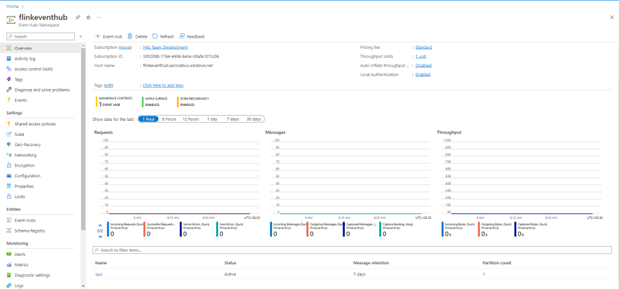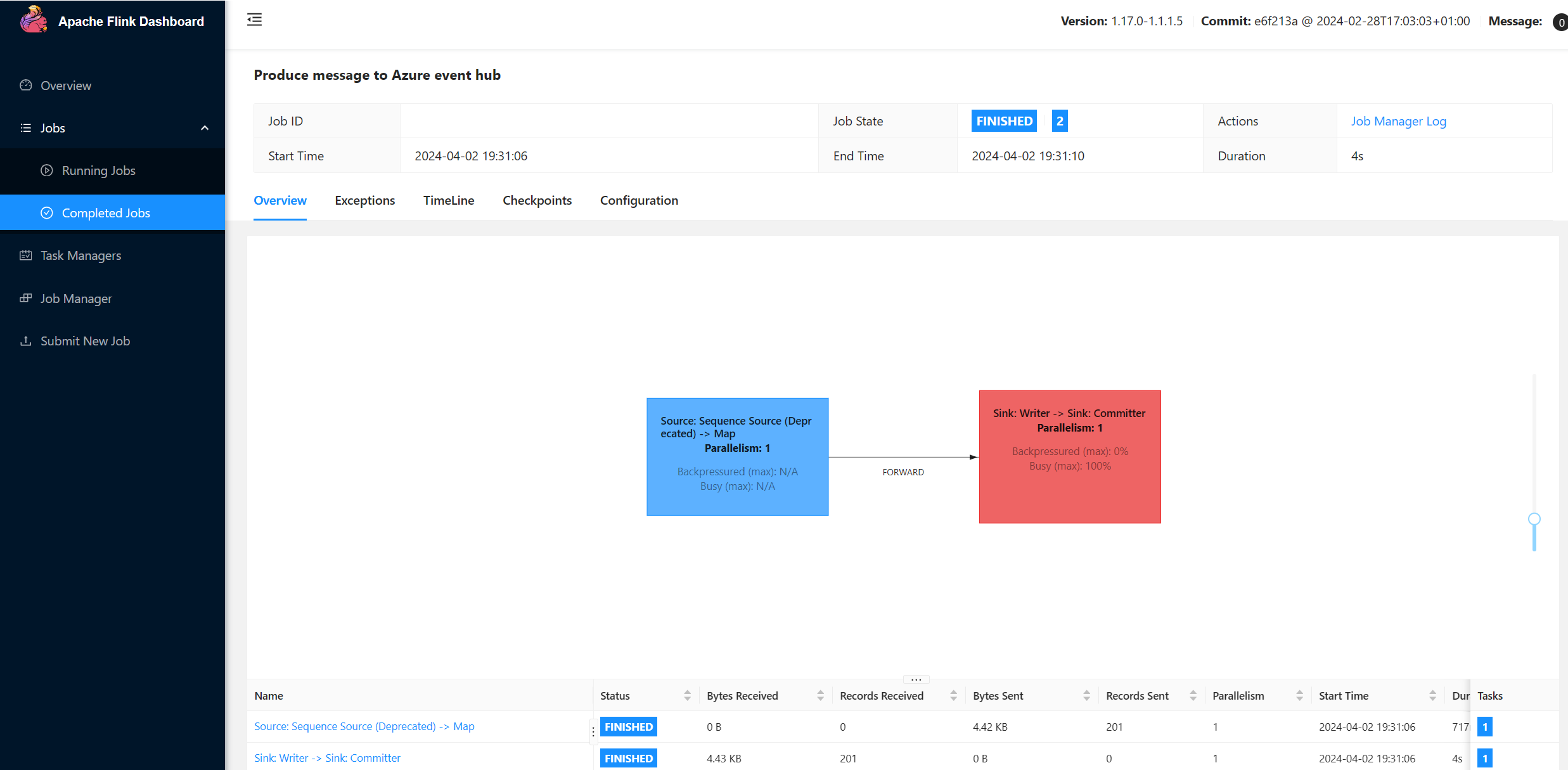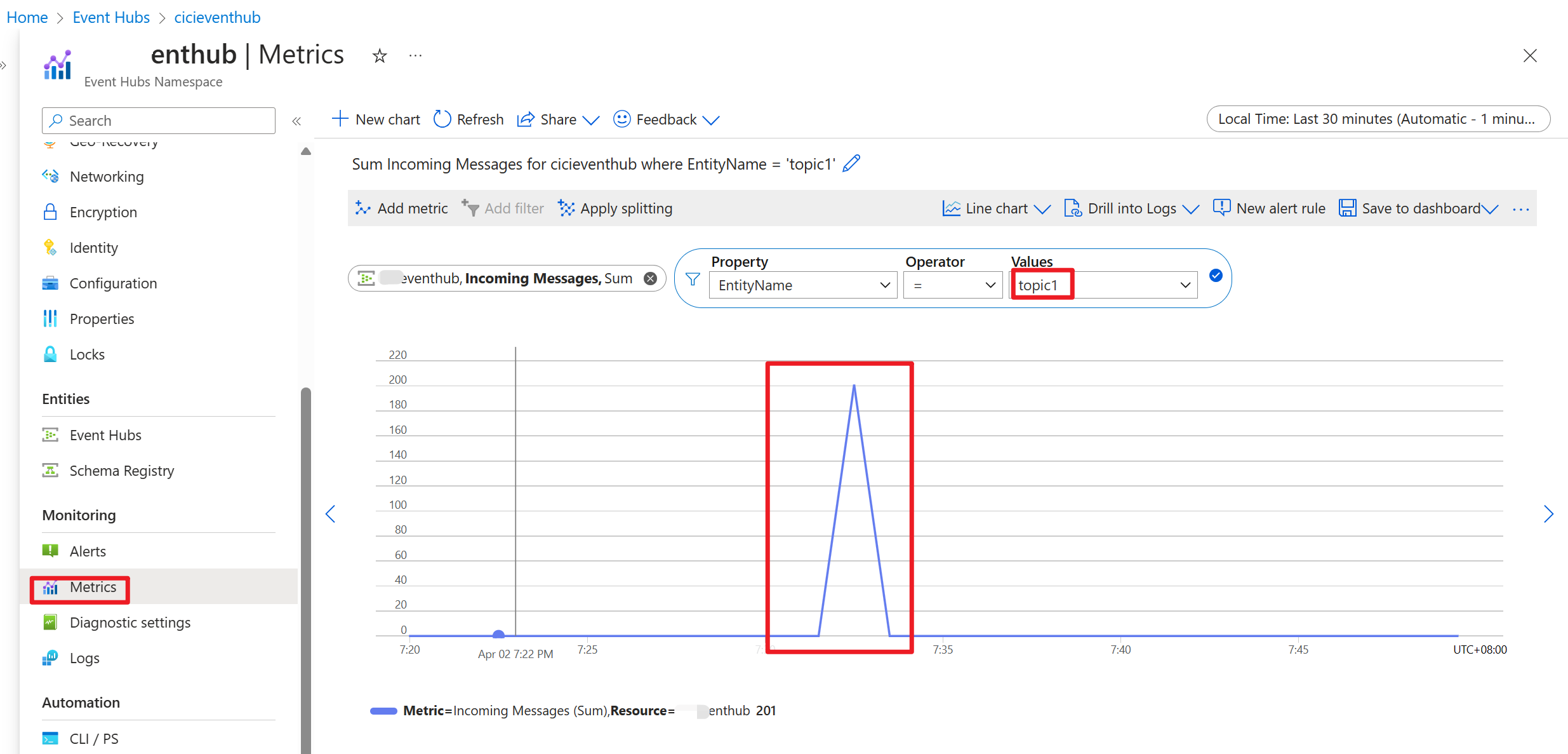Connect Apache Flink® on HDInsight on AKS with Azure Event Hubs for Apache Kafka®
Note
We will retire Azure HDInsight on AKS on January 31, 2025. Before January 31, 2025, you will need to migrate your workloads to Microsoft Fabric or an equivalent Azure product to avoid abrupt termination of your workloads. The remaining clusters on your subscription will be stopped and removed from the host.
Important
This feature is currently in preview. The Supplemental Terms of Use for Microsoft Azure Previews include more legal terms that apply to Azure features that are in beta, in preview, or otherwise not yet released into general availability. For information about this specific preview, see Azure HDInsight on AKS preview information. For questions or feature suggestions, please submit a request on AskHDInsight with the details and follow us for more updates on Azure HDInsight Community.
A well known use case for Apache Flink is stream analytics. The popular choice by many users to use the data streams, which are ingested using Apache Kafka. Typical installations of Flink and Kafka start with event streams being pushed to Kafka, which can be consumed by Flink jobs. Azure Event Hubs provides an Apache Kafka endpoint on an event hub, which enables users to connect to the event hub using the Kafka protocol.
In this article, we explore how to connect Azure Event Hubs with Apache Flink on HDInsight on AKS and cover the following
- Create an Event Hubs namespace
- Create a HDInsight on AKS Cluster with Apache Flink
- Run Flink producer
- Package Jar for Apache Flink
- Job Submission & Validation
Create Event Hubs namespace and Event Hubs
To create Event Hubs namespace and Event Hubs, see here
Set up Flink Cluster on HDInsight on AKS
Using existing HDInsight on AKS Cluster pool you can create a Flink cluster
Run the Flink producer adding the bootstrap.servers and the
producer.configinfobootstrap.servers={YOUR.EVENTHUBS.FQDN}:9093 client.id=FlinkExampleProducer sasl.mechanism=PLAIN security.protocol=SASL_SSL sasl.jaas.config=org.apache.kafka.common.security.plain.PlainLoginModule required \ username="$ConnectionString" \ password="{YOUR.EVENTHUBS.CONNECTION.STRING}";Replace
{YOUR.EVENTHUBS.CONNECTION.STRING}with the connection string for your Event Hubs namespace. For instructions on getting the connection string, see details on how to get an Event Hubs connection string.For example,
sasl.jaas.config=org.apache.kafka.common.security.plain.PlainLoginModule required username="$ConnectionString" password="Endpoint=sb://mynamespace.servicebus.windows.net/;SharedAccessKeyName=RootManageSharedAccessKey;SharedAccessKey=XXXXXXXXXXXXXXXX";
Packaging the JAR for Flink
Package com.example.app;
package contoso.example; import org.apache.flink.api.common.functions.MapFunction; import org.apache.flink.api.common.serialization.SimpleStringSchema; import org.apache.flink.api.java.utils.ParameterTool; import org.apache.flink.connector.kafka.sink.KafkaRecordSerializationSchema; import org.apache.flink.connector.kafka.sink.KafkaSink; import org.apache.flink.streaming.api.datastream.DataStream; import org.apache.flink.streaming.api.environment.StreamExecutionEnvironment; import java.io.FileReader; import java.util.Properties; public class AzureEventHubDemo { public static void main(String[] args) throws Exception { // 1. get stream execution environment StreamExecutionEnvironment env = StreamExecutionEnvironment.getExecutionEnvironment().setParallelism(1); ParameterTool parameters = ParameterTool.fromArgs(args); String input = parameters.get("input"); Properties properties = new Properties(); properties.load(new FileReader(input)); // 2. generate stream input DataStream<String> stream = createStream(env); // 3. sink to eventhub KafkaSink<String> sink = KafkaSink.<String>builder().setKafkaProducerConfig(properties) .setRecordSerializer(KafkaRecordSerializationSchema.builder() .setTopic("topic1") .setValueSerializationSchema(new SimpleStringSchema()) .build()) .build(); stream.sinkTo(sink); // 4. execute the stream env.execute("Produce message to Azure event hub"); } public static DataStream<String> createStream(StreamExecutionEnvironment env){ return env.generateSequence(0, 200) .map(new MapFunction<Long, String>() { @Override public String map(Long in) { return "FLINK PRODUCE " + in; } }); } }Add the snippet to run the Flink Producer.
Once the code is executed, the events are stored in the topic "topic1"
Reference
- Apache Flink Website
- Apache, Apache Kafka, Kafka, Apache Flink, Flink, and associated open source project names are trademarks of the Apache Software Foundation (ASF).


